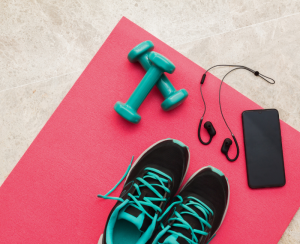After the incredible journey of childbirth, many new moms are eager to shed the “baby weight” and get back into their pre-pregnancy exercise routines.
However, it’s crucial to remember that our bodies go through a tremendous amount of trauma during labor, and proper healing and recovery should be the top priority. In this blog post, we’ll explore five essential tips for exercising postpartum, while also providing valuable additional information about this important phase.
1. Get Clearance from Your Physician
Before diving headfirst into any exercise regimen, it’s crucial to consult with your healthcare provider. They will evaluate your specific circumstances, taking into account your labor experience and postpartum recovery. Typically, physicians recommend waiting between 6 to 8 weeks postpartum before resuming exercise. This waiting period allows your body to heal and regain its strength, reducing the risk of complications.
2. Listen to Your Body
Your body is an incredible source of wisdom, and it will let you know when it’s ready for exercise. Pay attention to any signs of discomfort or pain and take things slowly. Remember, every woman’s postpartum timeline is unique, so don’t compare yourself to others. Start with gentle movements and gradually increase intensity as you feel comfortable. Trust your instincts and honor your body’s needs.
3. Begin with Low-Impact Exercises
To ease back into fitness, it’s recommended to start with low-impact exercises that focus on core strength and pelvic floor engagement. These exercises can help you reconnect with your body and rebuild stability. Consider incorporating activities such as gentle strength training routines, stretching and yoga. These workouts not only promote healing but also improve posture, flexibility, and overall well-being. Do not hesitate to ask your instructor or seek out modifications for exercises.
4. Seek Guidance from a Pelvic Physical Therapist
One common postpartum issue is Diastasis Recti, which refers to the separation of the abdominal muscles. This condition can affect core strength and stability. Seeking the expertise of a Pelvic Physical Therapist is highly recommended for every woman postpartum. They can assess your specific situation, guide you through exercises to address Diastasis Recti, and provide valuable tips for optimal recovery. With their support, you can regain strength and restore your body’s natural alignment.
5. Give Yourself Grace
Last but certainly not least, it’s crucial to be kind to yourself and embrace the journey of postpartum recovery. Remember that your body just accomplished something truly remarkable by bringing new life into the world. Healing takes time, and there is no rush to bounce back immediately. Embrace the changes your body has gone through and celebrate the miracle you’ve created. Be patient, listen to your body, and focus on self-care as you gradually regain your strength and fitness.
Exercising postpartum requires a mindful and gentle approach. By following these five essential tips – getting clearance from your physician, listening to your body, starting with low-impact exercises, seeking guidance from a Pelvic Physical Therapist, and giving yourself grace – you can embark on a safe and healthy recovery journey. Remember, postpartum exercise is not just about losing weight; it’s about nurturing and reconnecting with your body, fostering overall well-being, and embracing the incredible journey of motherhood.
















